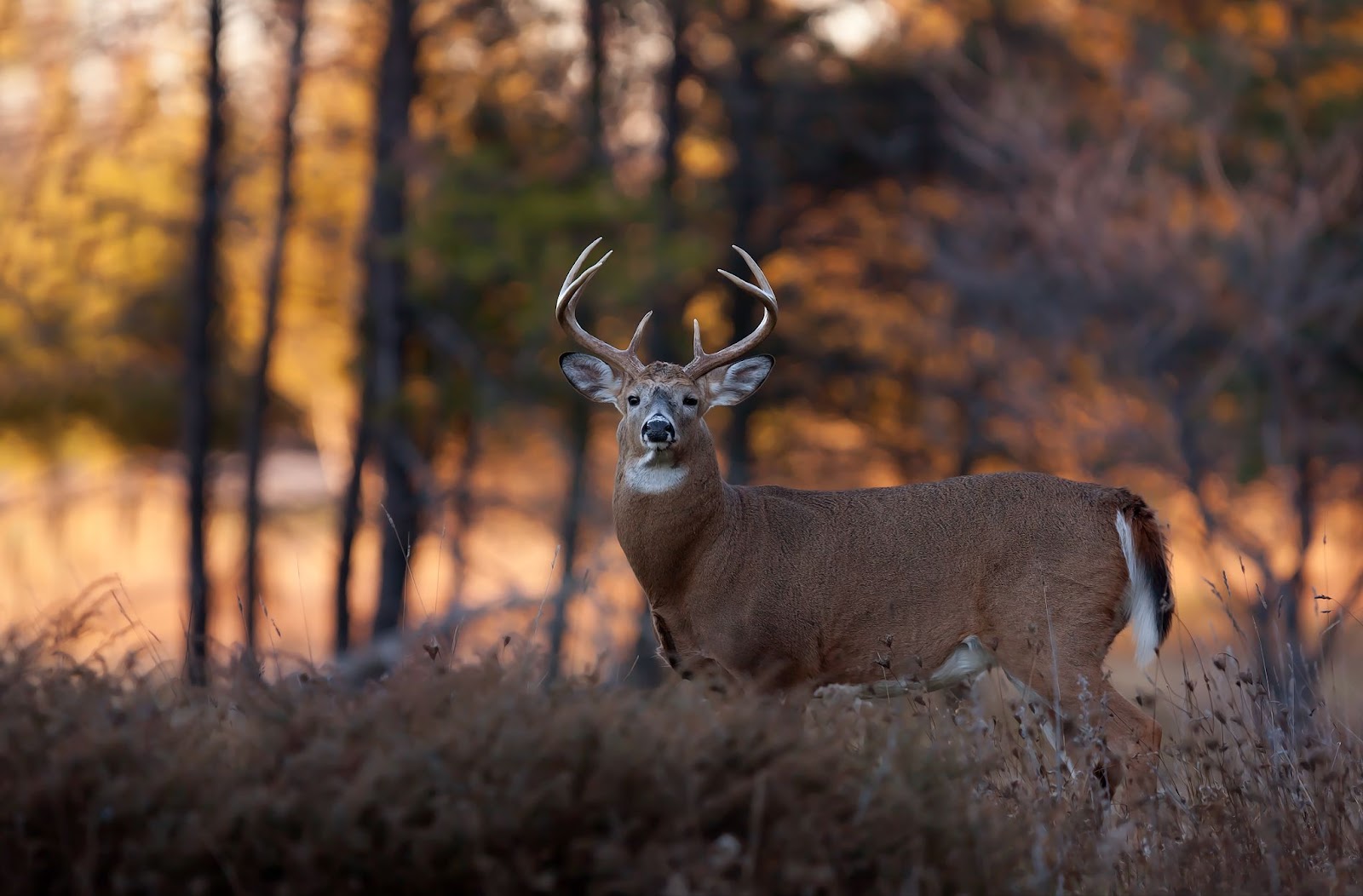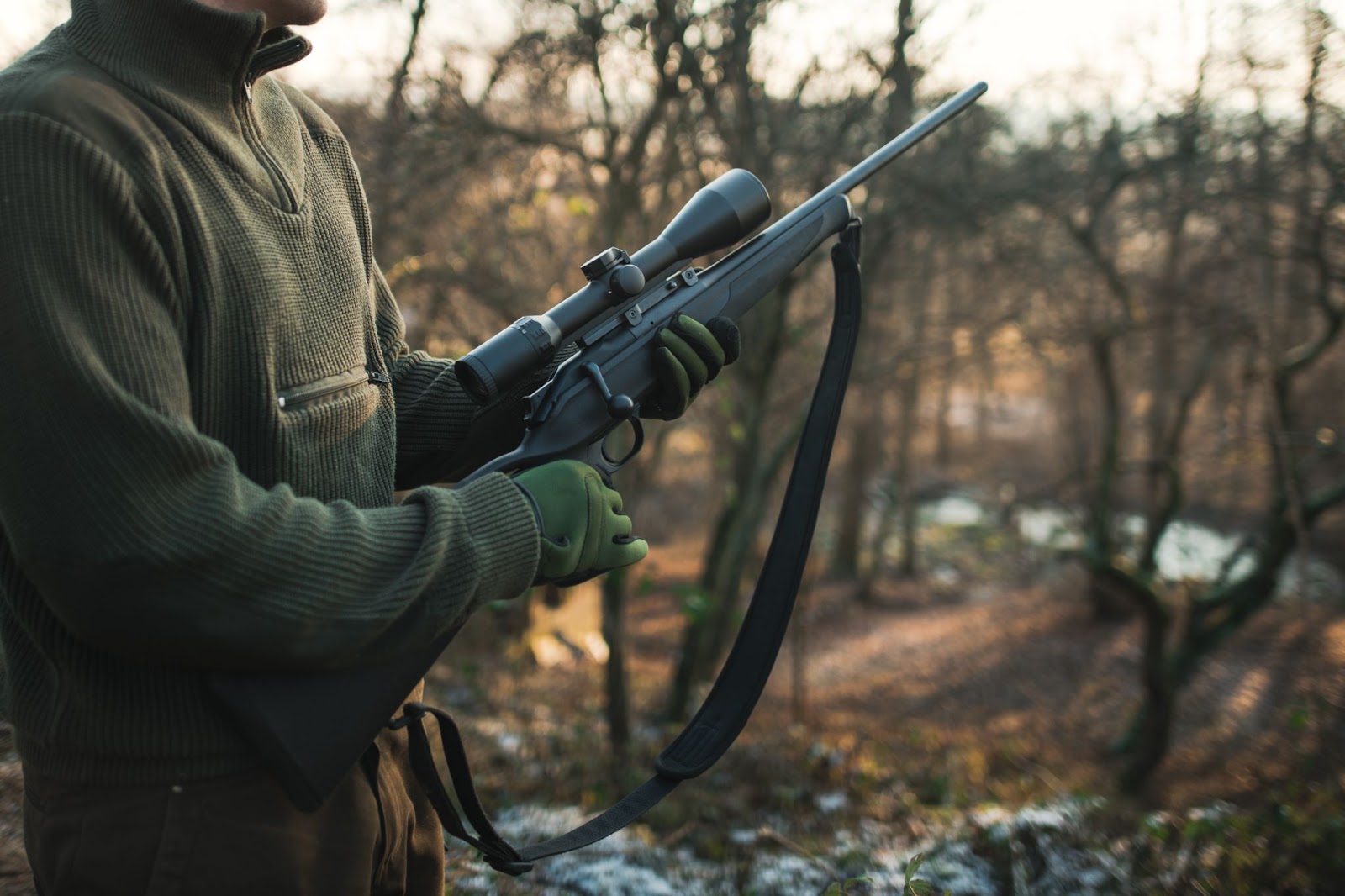If you’re planning your next hunting trip or considering hiring hunting guides, we’ve written this guide for you. We’re here to share essential tips and strategies to make your deer hunting experience successful and enjoyable.
Hunting is not about the chase; it’s about connecting with nature, understanding the wildlife, and practicing ethical hunting. So, whether you’re a beginner or an experienced hunter, let’s embark on this journey together and explore the exciting world of deer hunting.
First, we’ll look at 10 tips and tricks for hunting and then look at how to prepare for a hunting trip. Let’s dive in!
10 tips and tricks
1. Know the rutting season
The rut is the mating period, usually taking place in late fall or early winter. During this time, bucks become more active, marking their territory, and engaging in behaviors to attract does. By knowing the rutting season in your region, you can predict and exploit deer movement patterns.
2. Scouting is key
Before heading out, scout the hunting area thoroughly. Look for signs like tracks, rubs (marks left by bucks on trees), and scrapes (areas of exposed earth made by deer). These signs give you valuable insights into where Mule deer and Coues deer are feeding, sleeping, and traveling, enabling you to choose your hunting spot wisely.
3. Master the wind
Deer have an exceptional sense of smell. They can detect human odors from considerable distances, which can quickly ruin your hunt. Always plan your approach with the wind in mind, ensuring it is blowing from the deer towards you. This will help conceal your scent and increase your chances of a successful hunt.
4. Stay silent and still
Deer have excellent hearing and can detect the slightest noise. Maintain silence while in your stand or blind, minimizing unnecessary movement. Keeping still is equally important, as even the smallest motion might alert deer to your presence. Patience is key – wait quietly for your prey to approach within range.

5. Dress for success
Hunters should wear camouflage clothing that effectively blends with the surroundings to avoid detection. It helps break up your outline, making it harder for deer to spot you. Additionally, make sure to wear scent-blocking clothing and use scent-free soaps and sprays to reduce human odor.
6. Learn about deer vision
Understanding how deer see the world helps you capitalize on their visual weaknesses. Deer have exceptional nighttime vision but struggle to distinguish colors and details during daylight hours. The exception is blue and red, which deer can easily pick out. Opting for shades of gray and brown helps you stay hidden.
7. Deciphering deer communication
Deer use a variety of communication methods to interact with each other. Grunts, bleats, and rattles are common sounds hunters can replicate to attract deer or to communicate with them. Learning these calls and mimicking them with the help of hunting accessories will significantly improve your chances of luring deer within range.
8. Timing is everything
While deer can be active at any time of day, they have specific peak times when they are most active — typically during dawn and dusk. These low-light periods present favorable hunting opportunities. Keep a close eye on your surroundings during these times, increasing your chances of spotting deer and planning your shot.
9. Understand food sources
Deer are herbivores and have specific food preferences. Knowing what deer eat in your hunting area allows you to locate prime feeding spots. Acorns, fruits, leaves, and agricultural fields are all potential food sources that attract deer. By focusing on these areas, you increase the probability of encountering deer during their feeding times.
10. Learn deer patterns
Deer exhibit predictable movement patterns influenced by factors like food availability, weather conditions, and hunting pressure. Observing deer over time helps identify these patterns, allowing you to anticipate their movements and plan your hunting strategy accordingly. Studying trail camera footage or logging your personal observations can provide valuable insights into deer behavior changes throughout the seasons.
Pre-hunt preparation
Now you have the tips and techniques for deer hunting, but pre-hunt preparation is equally important for your upcoming hunting trips. By taking the time to prepare properly, you’ll increase your chances of having a rewarding and productive deer hunting experience.
1. Scout the area
Before the hunt, it’s essential to spend time scouting the hunting area. Look for signs of deer activity such as tracks, droppings, or browsed vegetation. This will help you determine the best hunting spots. It is also helpful to set up trail cameras to capture images and gather information on deer movement patterns.
2. Gather the right gear
Make sure you have all the necessary equipment for a successful hunt. Key items include a hunting rifle or bow, ammunition, appropriate clothing, safety gear, a map or GPS device, a hunting knife, and a backpack to carry any additional essentials.
3. Know the hunting regulations
Familiarize yourself with the hunting regulations specific to your location and season. This includes understanding bag limits, hunting dates, and any specific firearms or archery restrictions. Complying with regulations is not only ethically responsible but also helps conserve deer populations for future generations.
4. Practice shooting skills
Before heading out, it’s crucial to practice your shooting skills. Visit a shooting range or set up targets in a safe location and practice shooting from various distances and positions. This helps improve your accuracy and confidence, increasing your chances of making a clean and ethical shot.
5. Physical fitness
Deer hunting often requires walking long distances, traversing uneven terrains, and sometimes dragging the game back to your vehicle. Engaging in regular physical exercise before the hunt helps build stamina and endurance, ensuring you can handle the physical demands of the hunt.

6. Use hunting technology
In the world of deer hunting, technology has become a game-changer, offering hunters unprecedented advantages in tracking, planning, and executing their hunts with greater precision and ethical consideration.
The advent of GPS and mapping tools has revolutionized the way hunters scout the terrain and navigate the wilderness, allowing for detailed pre-hunt planning and real-time guidance in the field.
Trail cameras, another technological boon, have become essential for monitoring deer activity, providing hunters with valuable insights into patterns, peak movement times, and preferred habitats without disturbing the natural environment.
Moreover, the rise of specialized hunting apps has put a wealth of information at hunters’ fingertips, from weather forecasts and solunar calendars to digital hunting logs and social sharing platforms, enabling hunters to make informed decisions and connect with a community of like-minded individuals.
Advanced gear, including high-tech bows, rifles with improved optics, and noise-reducing clothing, further enhances the hunting experience, improving accuracy and efficiency while promoting safety and ethical hunting practices.
These technological advancements not only enrich the hunting experience but also contribute to conservation efforts by enabling more sustainable hunting practices, ensuring that the art of hunting is passed down through generations while maintaining the balance of natural ecosystems.
7. Familiarize yourself with deer behavior
Understanding Mule deer and Coues deer behavior is essential for hunting success. Learn about their feeding patterns, preferred habitats, and movement during different times of the day. This knowledge can help you predict where and when you are most likely to encounter deer.
8. Optimizing your hunting spot
Once you’ve scouted the area and identified Mule deer and Coues deer signs, it’s time to optimize your hunting spot. Look for natural features that can act as cover or funnel deer movement, such as dense thickets, trails, or natural funnels created by topography. Clear shooting lanes and set up tree stands or ground blinds to further camouflage yourself.
9. Pack essential supplies
On the day of the hunt, pack essential supplies in your backpack. These may include food, water, a first aid kit, a flashlight, binoculars, a compass, a range finder, and a survival whistle. It’s important to be prepared for any unexpected situation that may arise while you are out in the woods.
10. Safety first
Lastly, prioritize safety throughout your hunting experience. Always let someone know where you’ll be hunting and when you’ll return. Wear hunter orange to increase visibility to other hunters, and practice firearm safety rules. Treat every firearm as if it is loaded and only point it at what you intend to shoot. Be aware of your surroundings at all times and avoid taking unnecessary risks.
Call MX Hunting today
Ready to take your Mule deer and Coues deer hunting experience to the next level? Don’t go it alone! Let MX Hunting be your guide on your next adventure. With our expert guides by your side, you’ll unlock the secrets of successful deer hunting, learn advanced techniques, and discover the best spots that only the locals know about.
Whether you’re aiming for your first deer or you’re a seasoned hunter looking to refine your skills, MX Hunting is here to make your next trip unforgettable. Don’t miss out on the hunt of a lifetime. Contact MX Hunting today and step into the great outdoors with confidence and expertise. Your ultimate deer-hunting adventure awaits!

